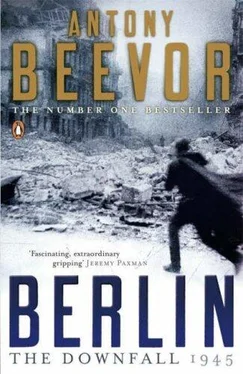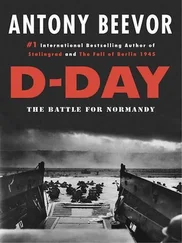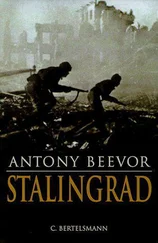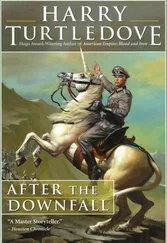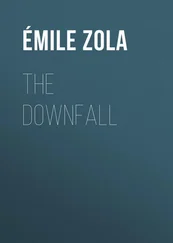7. Clearing the Rear Areas
On 14 February, in East Prussia, a convoy of military vehicles with Red Army markings turned off the main route from Rastenburg to Angeburg. This side road led into dense pine forest. The whole region was imbued with an atmosphere of melancholy.
A tall barbed-wire fence surmounted by concertina wire became visible from the road. The vehicles soon reached a barrier with a sign in German: ‘Halt. Military Site. Entrance Forbidden to Civilians.’ This was the entrance to Hitler’s former headquarters, the Wolfsschanze.
The trucks carried frontier guard troops from the 57th NKVD Rifle Division. The officers in command of the convoy wore Red Army uniforms, yet they owed no allegiance to its chain of command. As members of SMERSH counter-intelligence, they were in theory answerable only to Stalin. Their feelings towards the Red Army at that time were not comradely. The dilapidated vehicles which they had been given came from army units who had taken the opportunity to rid themselves of their worst equipment. Although this was common practice, SMERSH and the NKVD did not appreciate it.
Their leader wore the uniform of a Red Army general. This was Commissar of State Security of the Second Rank, Viktor Semyonovich Abakumov. Beria had appointed him the first chief of SMERSH in April 1943, soon after the victory at Stalingrad. Abakumov occasionally followed his leader’s habit of arresting young women in order to rape them, but his chief speciality was taking part in the beatings of prisoners with a rubber truncheon. In order not to spoil the Persian carpet in his office, ‘a dirty runner bespattered with blood was rolled out’ before the unfortunate was brought in.
Abakumov, although still chief of SMERSH, had been sent by Beria ‘to carry out the necessary Chekist measures’ behind the advance of the 3rd Belorussian Front into East Prussia. Abakumov had ensured that the 12,000-strong NKVD forces directly under his command were the largest of all those attached to army groups invading Germany. They were larger even than those with Marshal Zhukov’s armies.
Wet snow lay all around. To judge from Abakumov’s report to Beria, the NKVD troops dismounted and blocked the road, while he and the SMERSH officers began their inspection. Since German booby traps had been reported in the Rastenburg area, they were no doubt cautious. To the right of the entrance barrier stood several stone blockhouses which contained mines and camouflage material. On the left-hand side there were barrack blocks where the guards had lived. The SMERSH officers found epaulettes and uniforms from the Führerbegleit battalion. Hitler’s fear the previous year of being captured by a surprise Soviet parachute drop had led ‘the Führer’s guard battalion to be increased to a mixed brigade’.
Following the road deeper into the forest, Abakumov saw signs on either side of the road. These were translated for him by his interpreter: ‘It is forbidden to step off the road’ and ‘Beware mines!’ Abakumov was clearly taking notes the whole time for his report to Beria, which he knew would be passed to Stalin. The Boss was obsessively interested in all details of Hitler’s life.
The most striking aspect of Abakumov’s report, however, is the degree of Soviet ignorance it reveals about the place. This is especially surprising when one considers how many German generals they had captured and interrogated between the surrender at Stalingrad and the beginning of 1945. They appear to have taken almost two weeks to find this complex, four kilometres square. Concealment from the air was indeed impressive. Every road and alley was covered with green camouflage nets. Straight lines were broken with artificial trees and bushes. All the exterior lights had dark blue bulbs. Even the observation posts, up to thirty-five metres high in the forest, had been made to look like pine trees.
When they entered the first inner perimeter, Abakumov observed the ‘ferro-concrete defences, barbed wire, minefields and large numbers of fire positions and barracks for guards’. At Gate No. 1 all the bunkers had been blown up after the Führer’s final departure on 20 November 1944, less than three months before, but Abakumov clearly had no idea when the complex had been abandoned. They came to a second perimeter fence of barbed wire, then a third. Within the central compound, they found bunkers with armoured shutters linked to an underground garage capable of taking eighteen cars.
‘We entered with great care,’ Abakumov wrote. They found a safe but it was empty. The rooms, he noted, were ‘very simply furnished’. (The place had once been described as a cross between a monastery and a concentration camp.) The SMERSH officers were only certain that they had found the right place when they discovered a sign on a door which read, ‘Führer’s Wehrmacht Adjutant’. Hitler’s room was identified by a photograph of him with Mussolini.
Abakumov did not reveal any emotion over the fact that they were standing at last in the place from where Hitler had directed his merciless onslaught against the Soviet Union. He seemed far more preoccupied by the ferro-concrete constructions and their dimensions. Deeply impressed, he appears to have wondered whether Beria and Stalin might like something similar constructed: ‘I think it would be interesting for our specialists to inspect Hitler’s headquarters and see all these well-organized bunkers,’ he wrote. Despite their imminent victory, Soviet leaders did not appear to feel so very much more secure than their arch-enemy.
The SMERSH detachments and NKVD divisions attached to the Fronts were, in Stalin’s own words, ‘indispensable’ to deal with ‘all unreliable elements encountered in occupied territories’. ‘The divisions have no artillery,’ Stalin had told General Bull of the US Army during the meeting with Air Marshal Tedder, ‘but they are strong in automatic weapons, armoured cars and light armoured vehicles. They must also have well developed investigation and interrogation facilities.’
In German territories, such as East Prussia and Silesia, the first priority of the NKVD rifle regiments was to round up or hunt down German stragglers bypassed in the advance. Soviet authorities defined each Volkssturm man as a member of the Wehrmacht, but since almost every male between fifteen and fifty-five was called up, that included a large majority of local men. Those Volkssturm members who remained at home, rather than fleeing on the treks, were thus in many cases marked down as stay-behind sabotage groups, however elderly. Over 200 German ‘saboteurs and terrorists’ were reported ‘shot on the spot’ by NKVD forces, but the true figure was likely to have been far higher.
In Poland, Stalin’s description of ‘unreliable elements’ did not refer to the tiny minority of Poles who had collaborated with the Germans. It applied to all those who supported the Polish government in exile and the Armia Krajowa, which had launched the Warsaw Uprising the previous year. Stalin regarded the Warsaw revolt against the Germans as a ‘criminal act of an anti-Soviet policy’. In his eyes, it was clearly an attempt to seize the Polish capital for the ‘émigré government in London’ just before the arrival of the Red Army, which had done all the fighting and dying. His shameful betrayal of Poland to the Nazis in 1939 and Beria’s massacre of Polish officers at Katyn were evidently not worth considering. He also ignored the fact that the Poles had proportionately suffered even more than the Soviet Union, losing over 20 per cent of their population. Stalin was convinced that Poland and its government was his by right of conquest, and this proprietorial sentiment was widely shared within the Red Army. When Soviet forces crossed the German frontier from Poland, many ‘felt that we had at last cleansed our own territory’, instinctively assuming that Poland was an integral part of the Soviet Union.
Читать дальше
